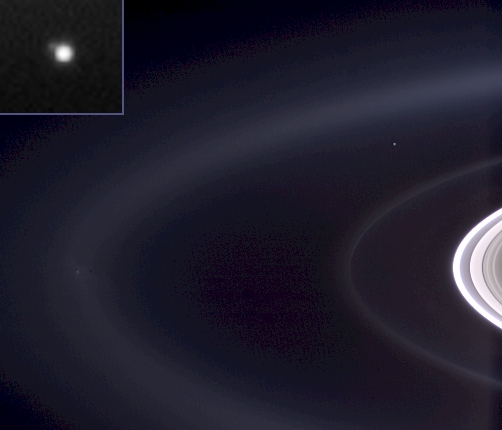Apod

This is s truly humbling image of earth from the satellite Cassini, currently orbiting Saturn. We can clearly see the rings of the gas giant, but we also notice a pale blue dot. That dot is earth. The Cassini Huygens satellite, probably one of the most ambitious endeavors by NASA. Cassini is loaded with high tech gear, making it very able to take various amounts of measurements and samples. Cassini reached Saturn almost three years ago in 2004. The Cassini satellite is actually comprised of two probes, the Cassini probe, with 12 instruments, and the Huygens, with six.
The image was possible because Saturn blocks the brightness of the sun, making the visible. The moon, as a slight elongation, is visible from the image. Earth's blue waters give it a slightly blue hue. Earth is home to over six billion. And over an octillian, or 8 followed by 27 zeros, Prochlorococcus, or plants.




